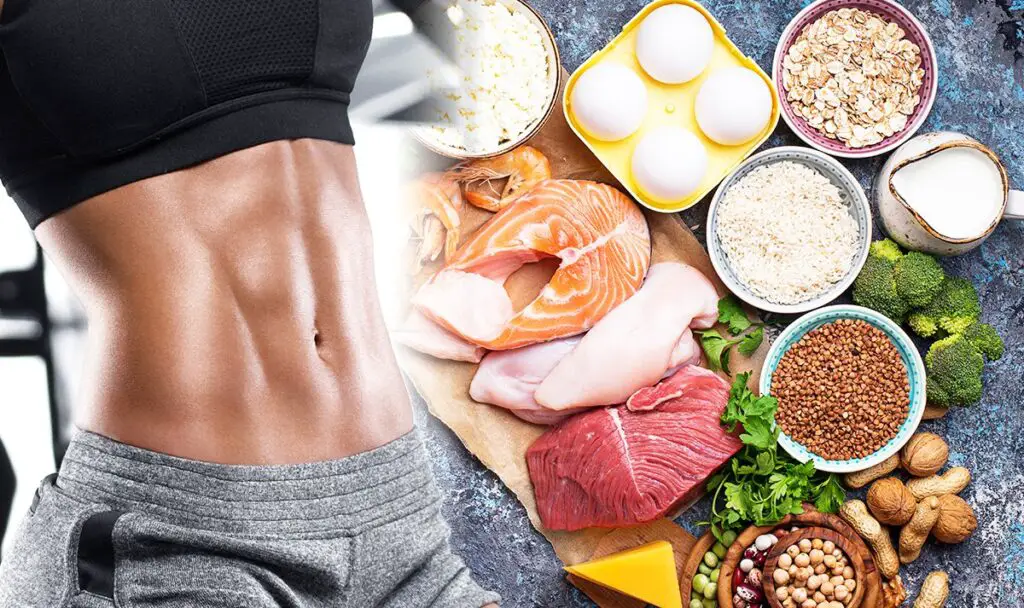Introduction
What Meats Are Good For Weight Loss: When embarking on a weight loss journey, many individuals might instinctively think that cutting out meat from their diet is the way to go. However, the reality is far more nuanced. Meats, when chosen wisely and consumed in moderation, can actually be valuable allies in achieving and maintaining a healthy weight. The notion that all meats are detrimental to weight loss stems from misconceptions about their nutritional profiles. Meats are not only packed with essential nutrients but can also aid in appetite control and muscle maintenance two key factors in successful weight management.
Their varying effects on the body and highlighting those that can be particularly beneficial for individuals looking to shed excess pounds. From lean poultry and fish to alternative protein sources, the protein-packed options that can make weight loss both achievable and delicious. Whether you’re a carnivore, flexitarian, or simply seeking to make informed dietary choices, this will help you harness the power of meats to support your weight loss goals.
While the idea of meat often raises concerns about calorie density and saturated fats, the reality is far more nuanced. Contrary to the common belief that meat is a foe in the battle of the bulge, the truth is that some meats can be valuable assets on the path to a healthier weight. Understanding which meats are conducive to weight loss requires a closer look at their nutritional composition. Not all meats are created equal; they vary widely in terms of fat content, protein quality, and additional nutrients. Making the right choices within the realm of meats can be a key driver in achieving and sustaining your weight loss goals.

What meats to avoid when losing weight?
Examples of processed meats include bacon, jerky, hot dogs, salami, and ham. These types of meat are often high in salt and low in nutrients. They also tend to be calorie-dense compared with lean protein sources, such as poultry, fish, and beans.
When aiming to lose weight, it’s advisable to limit or avoid certain types of meats that are high in calories, saturated fats, and sodium.
Processed Meats: Processed meats like bacon, jerky, hot dogs, salami, and ham are often heavily processed and packed with unhealthy additives. They tend to be high in sodium (salt), saturated fats, and preservatives, making them calorie-dense and low in essential nutrients.
Fatty Cuts of Red Meat: Cuts of beef and pork that are high in marbled fat, such as ribeye steaks or pork belly, are calorie-rich and contain significant amounts of saturated fats. While they can be enjoyed occasionally, they should be consumed in moderation when trying to lose weight.
Fried and Breaded Meats: Meats that are deep-fried or breaded, like fried chicken or breaded pork chops, can significantly increase calorie and fat intake due to the cooking methods. These should be consumed sparingly or prepared using healthier cooking techniques like grilling or baking.
Processed Meat Products: Meat products such as sausages, pepperoni, and certain lunch meats often contain added fats, salt, and preservatives. These can contribute to weight gain and should be limited in a weight loss diet.
Highly Marinated or Sugary Meats: Meats marinated in sugary sauces or glazes can add unnecessary calories and sugar to your meals. Opt for lean meats with minimal added sugars in their preparation.
Is mutton good for weight loss?
Weight loss, glowing skin, healthy hair and other health
Good for weight loss: Its high protein content and low-fat content makes it an ideal meat for weight loss. Just make sure the mutton you eat isn t fried. Great source of hemoglobin.Mutton consists of easily absorbed haem iron which is mostly seen in non-veg sources.
Mutton, like other meats, can be a part of a balanced diet when you’re aiming for weight loss.
High Protein Content: Mutton is rich in protein, which is crucial for maintaining muscle mass while losing weight. Protein also helps you feel full and satisfied, reducing overall calorie intake.
Low in Fat: Compared to other red meats like beef, mutton is generally leaner. Lower fat content means fewer calories, which can be beneficial for weight loss.
Nutrient Density: Mutton provides essential nutrients such as iron, zinc, and various B vitamins. These nutrients are important for overall health, including skin and hair health.
Iron Content: Mutton contains heme iron, which is easily absorbed by the body. Iron is essential for transporting oxygen in the blood, supporting energy levels, and overall vitality.
Portion Control: Pay attention to portion sizes. Overeating any food, including mutton, can lead to weight gain.
Preparation Method: Avoid fried or heavily processed mutton dishes, as they can be high in unhealthy fats and calories. Opt for cooking methods like grilling, roasting, or stewing without excessive added fats.
Accompaniments: What you eat with mutton matters too. Pair it with plenty of vegetables and whole grains to create a balanced meal that’s lower in calories and higher in fiber.
Moderation: Like any food, mutton should be part of a well-rounded diet. It’s not a magic solution for weight loss on its own, and variety in your diet is key.
Is it OK to eat meat while losing weight?
Meat can be a part of a healthy weight loss diet. The key is to eat lean meats with higher protein content and less saturated fat content. You may also want to stay away from processed meat. Processed meats contain high levels of sodium and saturated fat.
Yes, it is perfectly okay to eat meat while losing weight. In fact, meat can be a valuable component of a healthy and balanced weight loss diet.
High Protein Content: Meat, such as lean poultry, fish, and certain cuts of beef or pork, is an excellent source of high-quality protein. Protein is crucial for preserving muscle mass while you’re losing weight. It also helps you feel fuller for longer, which can aid in appetite control and reduce overall calorie intake.
Nutrient Density: Meat provides essential nutrients like vitamins (e.g., B vitamins) and minerals (e.g., iron, zinc) that are important for overall health. These nutrients are essential for energy metabolism, immune function, and other bodily processes.
Satiety: Protein-rich foods, including meat, have a high satiety factor, which means they can help you feel satisfied and reduce the likelihood of overeating or snacking on unhealthy options.
Taste and Satisfaction: Many people find meat to be flavorful and satisfying, making it easier to stick to a weight loss plan because they enjoy their meals.
Choose Lean Cuts: Opt for lean cuts of meat that are lower in saturated fat. Trim visible fat and remove the skin from poultry to reduce calorie and fat intake.
Watch Portions: Pay attention to portion sizes to avoid overeating. Meat should be a part of a balanced meal that includes plenty of vegetables and whole grains.
Avoid Processed Meats: Processed meats like bacon, sausages, and hot dogs are often high in sodium and saturated fat. These should be consumed in moderation or replaced with healthier alternatives.
Preparation Methods: Avoid frying or using excessive amounts of oil when cooking meat. Healthier cooking methods include grilling, roasting, baking, or steaming.
Variety: Don’t rely solely on meat for your protein intake. Incorporate plant-based protein sources like beans, lentils, and tofu into your diet for variety and added nutrients.
Can I lose weight eating mutton biryani?
Incorporating biryani into a weight-loss diet can offer potential benefits. However, one should prepare it with lean protein and veggies and eat small portions. Otherwise, its high calorie and fat content make it an unsuitable choice.
Losing weight while enjoying mutton biryani is possible, but it requires a mindful approach and some modifications to the traditional recipe.
Here are some considerations:
Portion Control: Biryani is often a calorie-dense dish, so paying attention to portion sizes is crucial. Limit your portion to a small serving to avoid excess calorie intake.
Choose Lean Meat: Opt for lean cuts of mutton and trim any visible fat. This will reduce the overall calorie and saturated fat content of the dish.
Load Up on Veggies: Include plenty of vegetables in your biryani. Vegetables add fiber, vitamins, and minerals to the dish while helping to control overall calorie intake.
Healthy Cooking Methods: Use healthier cooking methods like baking, grilling, or steaming instead of frying the meat or using excessive amounts of oil.
Whole Grains: Consider using brown or whole-grain rice instead of white rice in your biryani. Whole grains provide more fiber and nutrients and can help you feel fuller for longer.
What meat can I eat everyday?
As far as meat options go, consuming leaner, less-processed meats more often than fattier and processed meats (like hot dogs, sausages, bacon and deli meats) is recommended. “Fattier and processed meats typically contain more saturated fat and sodium than leaner cuts of red meat, chicken and turkey,” Sollid says.
If you plan to include meat in your daily diet, it’s advisable to prioritize lean and less-processed meat options to support your overall health.
Skinless Poultry: Skinless chicken and turkey breast are lean sources of protein that are relatively low in saturated fat. They can be prepared in various ways and are versatile for different recipes.
Lean Cuts of Red Meat: Opt for lean cuts of beef, such as sirloin, tenderloin, or round steak, and trim any visible fat. These cuts are lower in saturated fat compared to fattier cuts like ribeye or T-bone steaks.
Fish: Fatty fish like salmon, mackerel, and trout are excellent sources of protein and heart-healthy omega-3 fatty acids. Lean fish like tilapia and cod are also good choices.
Lean Pork: Lean cuts of pork, such as pork loin or tenderloin, are lower in fat and can be a part of a healthy diet. Trim any excess fat before cooking.
Ground Turkey or Chicken: Ground poultry is a versatile option for recipes like burgers, meatballs, and tacos. Choose lean ground turkey or chicken to minimize saturated fat intake.
Can I eat chicken during weight loss?
Chicken is an excellent option for weight watchers because of its low calories but high in healthy nutrients that promote weight loss. In addition, regular consumption of chicken can strengthen your bones, reduce appetite, and build muscle mass.
Yes, you can absolutely eat chicken as part of a weight loss plan.
Low in Calories: Skinless, boneless chicken breast is particularly low in calories, making it an excellent choice for those watching their calorie intake while aiming to lose weight.
High in Protein: Chicken is a rich source of high-quality protein. Protein is crucial for maintaining muscle mass, and it also helps you feel full and satisfied, reducing the likelihood of overeating or snacking on unhealthy foods.
Low in Fat: Chicken breast, in particular, is a lean meat that contains minimal saturated fat. This makes it a heart-healthy choice and a lower-calorie alternative to fattier cuts of meat.
Versatile: Chicken can be prepared in various ways, making it a versatile ingredient in your weight loss journey. You can grill, bake, roast, or poach chicken with different seasonings and flavors to keep your meals interesting and satisfying.
Nutrient Density: Chicken provides essential nutrients such as vitamins (e.g., B vitamins) and minerals (e.g., phosphorus, selenium) that are important for overall health.
Skin Removal: Removing the skin from chicken reduces its fat content and calorie count.
Portion Control: Be mindful of portion sizes. Consuming excessive amounts of any food, even lean chicken, can lead to weight gain.
Healthy Cooking Methods: Avoid frying or using excessive amounts of oil when cooking chicken. Choose healthier methods like grilling, baking, or steaming.
Balanced Diet: Incorporate chicken into a balanced diet that includes a variety of foods, such as vegetables, fruits, whole grains, and other lean protein sources.
What is the unhealthiest meat?
Processed Meats: Notably, there are over 200 types of cold cuts and processed meats. These include hot dogs, bologna, and Vienna sausages. Processed meat is often made of less healthy organs like the stomach, lips, and heart.
Processed meats are often considered some of the unhealthiest types of meat due to their high levels of sodium, saturated fats, and the presence of additives.
Hot Dogs: Hot dogs are typically made from a mixture of ground meat (often beef, pork, or chicken) and various additives. They are high in sodium, saturated fats, and often contain preservatives.
Bologna: Bologna is another highly processed meat product that is known for its high sodium and saturated fat content. It is typically made from a blend of various meats, including less desirable cuts.
Vienna Sausages: Vienna sausages are small, canned sausages that are often high in sodium and unhealthy saturated fats.
Lunch Meats/Deli Meats: Common deli meats like salami, ham, turkey, and roast beef are often processed and contain added sodium and preservatives. These meats can be high in sodium, and some may also contain nitrates or nitrites, which have been associated with health concerns.
Processed Bacon: While bacon is a beloved meat product, processed bacon is high in saturated fat and sodium. It’s often cured with nitrites and may contain additives.
What meat is highest in protein?
The rundown of which meats are highest in protein. Chicken breast and lean cuts of beef are top choices, offering high protein-per-gram ratios. Turkey breast, bison, venison, pork tenderloin, fish, chicken drumsticks, lean beef, lamb, and chicken thigh are also solid high-protein options.
Chicken Breast: Skinless, boneless chicken breast is renowned for its high protein content and low fat, making it a staple for those seeking lean protein sources.
Lean Cuts of Beef: Lean beef cuts like sirloin, tenderloin, and round steak are rich in protein while being lower in fat compared to fattier cuts of beef.
Turkey Breast: Skinless turkey breast is similar to chicken breast in terms of its high protein content and lean profile.
Bison: Bison meat is exceptionally lean and protein-rich, making it a healthy choice for those looking to increase their protein intake.
Venison: Venison, often derived from deer, is another lean, protein-packed meat option.

Conclusion
In the quest for weight loss, choosing the right meats can be a pivotal factor in achieving success. Has shed light on the healthy meats diverse world of meat options and their impact on our journey toward healthier bodies. Smart choices in cooking methods, portion control, and pairing with fiber-rich vegetables and whole grains are vital components of a successful weight loss plan.
Unprocessed meats, such as skinless poultry, fish, and lean cuts of beef or pork, emerge as champions in the quest for weight loss. These protein-rich choices not only help in preserving muscle mass but also promote a feeling of fullness, making it easier to manage calorie intake. However, it’s not just about the type of meat but also how it’s prepared and complemented with other foods.
While meats can be valuable allies in weight management, balance and moderation remain the keys to a sustainable and healthy approach to shedding excess pounds. Ultimately, by making informed decisions about the meats we consume, we can craft a diet that is both enjoyable and supportive of our weight loss goals.

